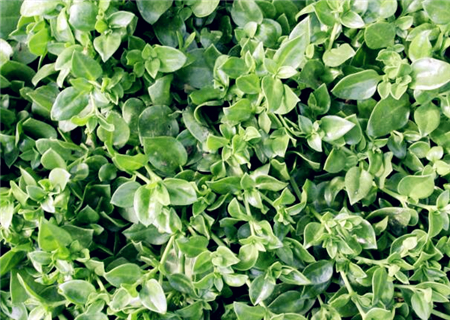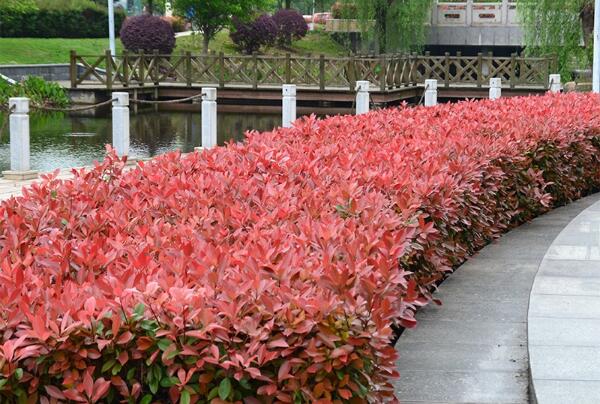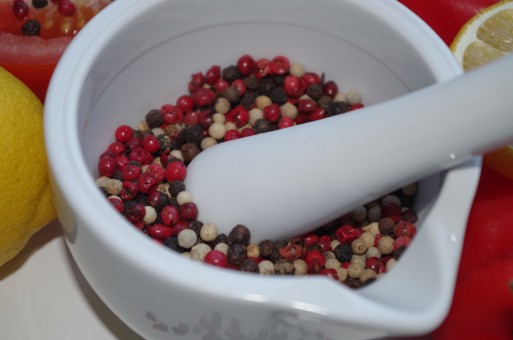How much is the market price of the medicinal plant andrographis paniculata? How do you plant seeds? What's the difference between Tian Qi and Tian Qi?
Andrographis paniculata, also known as spring lotus autumn willow, at the first sight, olive nuclear lotus, gentian grass, golden vanilla, golden ear hook, Indian grass, bitter grass and so on. Medicinal plants have the effects of heat-clearing and detoxification, anti-inflammation, detumescence and pain. So how much is the market price of andrographis per jin? How do you plant seeds? What's the difference between Tian Qi and Tian Qi?

It is understood that the andrographis paniculata market and the previous stable, the current market price of andrographis paniculata leaves in 9-10 yuan per jin.
How to plant andrographis paniculata seeds
Land selection and preparation
Andrographis likes high temperature and humid climate. Like plenty of sunshine, like fat. The optimum temperature for seed germination and seedling growth was 25: 30 ℃. When the temperature dropped to 15: 20 ℃, the growth was slow, and the temperature dropped to about 8 ℃. When the temperature was about 0 ℃ or frost, all the plants withered. The alkaline soil of pH8.0 can still grow normally when it is cultivated in acidic and neutral sandy loam with fertile, loose and well drained soil.
Seed treatment
Andrographis paniculata is often used by seedling transplanting method or direct seeding method, mainly seedling transplanting method. When the fruit is common brown from September to October, pick it in batches before the dew is dry in the morning, put it in the shade and ripen it for a few days, cover it with a cover to avoid the bouncing loss of the seeds. After all the pods are cracked, the pericarp is screened and the seeds are obtained. The seeds of andrographis paniculata are small, with a 1000-grain weight of 0.93-1.52 grams, a hard seed coat and a layer of oyster, which requires high sowing techniques. Before sowing, the seeds should be ground with fine sandpaper or sand to remove the seed coat wax, soak the seeds in warm water, and then germinate in a 30 ℃ incubator, and then sow the seeds.
Sowing time
The soil of andrographis paniculata seedling bed should be fertile and loose, rake flat and fine. In late February to early March in Guangdong and Fujian, sowing in high border seedling beds in July in autumn, hotbeds were used in Jiangsu, Zhejiang and Sichuan in mid-and late March, and cold beds in April. The greenhouse in North China and Northwest China should be in the early and middle of March, the hotbed in the first ten days of April, the sunny bed in the middle of April, and the plastic greenhouse should be sown on April 15-20.
Seedbed management
The main purpose of the seedbed management of andrographis paniculata is to control the temperature and humidity. The seedbed should always be kept moist before emergence, and the relative humidity in the border should be kept at 70-80%. After the seedlings come out, the soil moisture should be controlled to prevent the occurrence of quenching disease. The seedling is 6-7 cm tall and can be transplanted when it has 3-4 pairs of true leaves. Live broadcast should not be earlier than mid-or late April in Jiangsu and Zhejiang, mid-April to early May in Sichuan and mid-May in Beijing. The cultivation is best divided into two kinds: seed field and commercial field. The seed field should be transplanted from May to early June, with row spacing of 50 cm to 65 cm and plant spacing of 30 cm to 35 cm. Commercial fields can be planted from late May to early June with a row spacing of 25 cm, a spacing of 16 cm and a plant spacing of 105 000 plants per square millimeter.
Field management
The field management of andrographis paniculata is mainly timely watering to facilitate the seedlings to take new roots, and then ploughing and weeding and topdressing once every 15 to 20 days, which is mainly nitrogen fertilizer, which can flow human and animal manure, urea and so on. especially in June, July and August, field management is very important, it is necessary to apply more nitrogen fertilizer, often watering and so on. When the plant height is 30cm to 40cm, the soil can be cultivated to prevent wind damage.
Pest control
The disease of andrographis paniculata has blight, there are 1-2 pairs of true leaf stage, which can reduce soil moisture, treat soil with more than 50% carbendazim, or irrigate the diseased area with 1000 times liquid. Quenching disease occurs in 2-3 pairs of true leaves, which can control the temperature, pay attention to ventilation and strengthen the management of seedling bed. Black stem disease occurs in the adult stage, which can strengthen field management, eliminate stagnant water in time, avoid continuous cropping, and spray or irrigate the diseased area with 1000 times of carbendazim during the onset period. During the epidemic period, 50% carbendazim 1000 times solution was sprayed or shallowly irrigated in the disease area. Insect pests include cotton bollworm, mole cricket and so on.
The difference between andrographis paniculata and Tianqi
1. Andrographis paniculata. It is an annual plant with more branches on the lower branch and fewer leaves on the inflorescence axis. Its flower bracts are very small, the Corolla is also very small, the color is white, and the lower lip has purple markings. It is mainly planted and cultivated in Fujian, Guangdong, Hainan, Guangxi and Yunnan provinces in China.
two。 Tian Qi. Its trunk is conical or cylindrical, the color is grayish brown or grayish yellow, its top is covered with stem marks, and there are warts around it. Tianqi is mainly cultivated in Yunnan Province of China.
Time: 2019-03-20 Click:
- Prev

When will the red leaf Photinia of Rosaceae be sown? How to plant it? What are the effects?
Photinia rugosa is a hybrid of Photinia in Rosaceae. It is a small evergreen tree with red leaves in spring, green in summer and red in autumn, winter and spring. So when will the red-leaf heather of Rosaceae be sown? How to plant it? What are the effects? When will the red leaf Photinia be sown?
- Next

How many years does the perennial deciduous plant Schisandra chinensis bear fruit? How many jin per mu do you usually get? How is the planting benefit?
Schisandra chinensis, also known as Zanthoxylum bungeanum and Fructus Schisandrae, is a common medicinal herb, which is widely cultivated because of its high medicinal value. at present, Schisandra chinensis has been planted in many areas of our country. How many jin per mu do you usually get? How is the planting benefit? How many years will it turn out? Schisandra chinensis seedlings bear fruit after 5 years
Related
- Fuxing push coffee new agricultural production and marketing class: lack of small-scale processing plants
- Jujube rice field leisure farm deep ploughing Yilan for five years to create a space for organic food and play
- Nongyu Farm-A trial of organic papaya for brave women with advanced technology
- Four points for attention in the prevention and control of diseases and insect pests of edible fungi
- How to add nutrient solution to Edible Fungi
- Is there any good way to control edible fungus mites?
- Open Inoculation Technology of Edible Fungi
- Is there any clever way to use fertilizer for edible fungus in winter?
- What agents are used to kill the pathogens of edible fungi in the mushroom shed?
- Rapid drying of Edible Fungi

